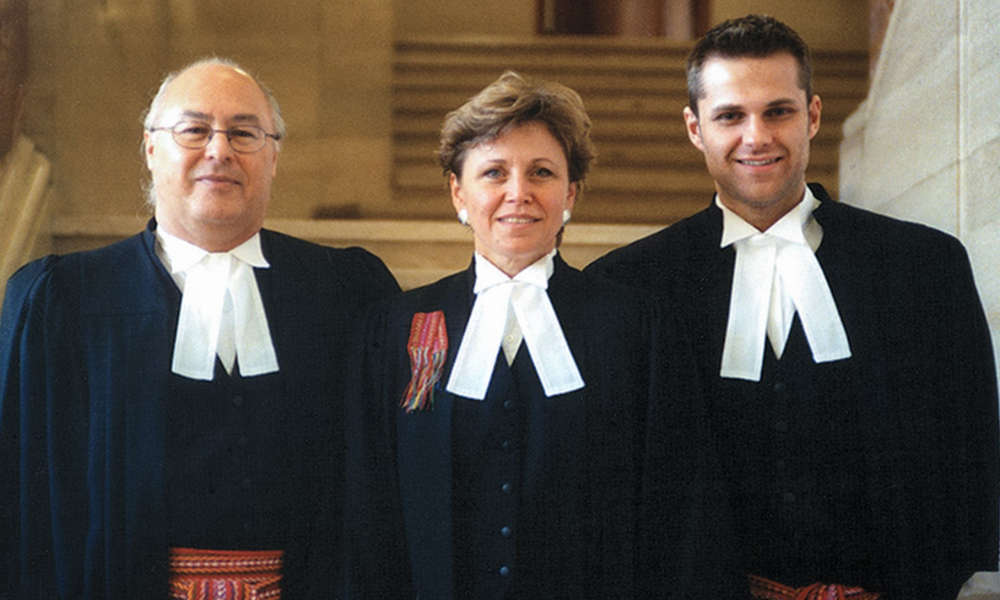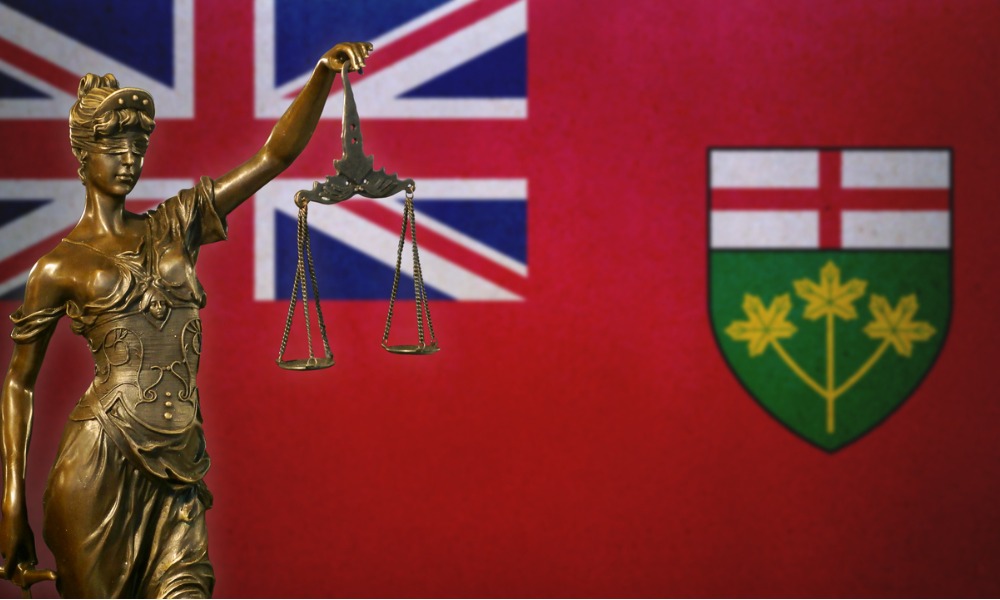How the Metis got out of the 'legal lacuna'

The first time Jason Madden appeared in court, it was in R. v. Powley, 2003 SCC 4, a landmark Metis rights case, when he was in his first year practising law.
Now a partner at Aird & Berlis, Madden comes from a Metis community in Northwestern Ontario that signed a “halfbreed adhesion” to Treaty #3 in 1875. He saw, from the treatment of his family and the denial of Metis rights, that the law could be a “wonderful tool for justice” but also a “strong arm for injustice.”
As the former Supreme Court of Canada Justice Beverley McLachlin put it: throughout Canadian history, the Metis have existed in a “legal lacuna.” The law on Metis rights has developed predominantly in the last two decades. Madden has been a part of most of it.
“We always joked that the Metis couldn't even get the janitor to meet with us when dealing with other governments, whether it be provincial or federal. Over the last 20 years, the Metis have used the courts to finally get to the table and finally get to negotiations.”
Madden calls pre-Powley the “era of absolute denial.” In 1982, the Charter of Rights and Freedoms expressly included the Metis in s. 35, which guaranteed that “The existing aboriginal and treaty rights of the aboriginal peoples of Canada are hereby recognized and affirmed.” Section. 35(2) states: “aboriginal peoples of Canada includes the Indian, Inuit and Métis peoples of Canada.” While 1982 was a “watershed moment” for the Metis, says Madden, the promise in s. 35 had to be “hammered out on the anvil of justice” through litigation.
In Powley, the SCC found that the term “Metis” in s. 35 does not refer to all individuals with mixed Indigenous and European heritage, but a distinctive people with their own customs, way of life, separate from Indigenous, Inuit, and Europeans. The court also ruled that in including the Metis in s. 35, Canada committed to “recognize and value the distinctive Metis cultures.”
In Powley, Madden acted for the intervenors the Metis Nation of Ontario and the Metis National Council. The case was crucial because the threshold for Aboriginal rights had previously been a presence prior to European contact, which would have excluded the Metis. The Powley case set out “a modified date of effective control,” before which the community needed to emerge, he says.
“In many ways, the Supreme Court of Canada in Powley breathed life into s. 35 for the Metis by making a test that actually fit for our unique emergence as a people and as distinct communities,” says Madden.
In Powley, the SCC directed government to negotiate with the Metis. But there was disagreement over how to identify a Metis community. From 2005 to 2011, Madden was involved in four cases across the prairies – R. v. Laviolette, R. v. Belhumeur, R. v. Goodon, and R. v. Hirsekorn – where the courts implemented the Powley decision and recognized the status of various Metis communities.
Then in 2013, the Metis began negotiating harvesting agreements, which are still in place in Manitoba, Ontario, and Alberta.
In 2015, Canadians elected the Liberal Party federally, and they came to Ottawa with a renewed focus on advancing reconciliation with Indigenous peoples, says Madden. “Quite substantive negotiations began with the federal government on self government and Metis-related claims.”
Manitoba Metis Federation Inc. v. Canada, 1 SCR 99 came in 2016. The case dealt with an unfulfilled land grant provision in the Manitoba Act. The SCC pushed Ottawa to deal with outstanding Metis claims against the Crown and said that “the unfinished business of reconciliation of the Metis people with Canadian sovereignty is a matter of national and constitutional import.”
The Daniels v. Canada, 1 S.C.R. 99 case also came down in 2016. The court found that the Metis are “Indians” under s. 91(24) of the Constitution Act, 1867, which states that the federal government has exclusive authority over “Indians and lands reserved for Indians.”
Daniels “provided clarity that the federal government has constitutional responsibility and jurisdiction for the Metis in the same way that it does for Inuit and First Nation peoples,” says Madden. The case eliminated the last obstacle the federal government used to avoid negotiating directly with the Metis in the same way they did with the First Nations and Inuit, he says.
Madden was counsel for intervenors on both Daniels and Manitoba Metis Federation.
The Daniels case opened the door to “substantive negotiations” on Metis self-government claims, he says, which have inaugurated a new era in the relationship between Canada and the Metis.
In 2019, the Metis Nation of Alberta, the Metis Nation of Ontario, and the Metis Nation of Saskatchewan all reached self-government agreements with Canada. In 2021, Canada inked a self-government agreement with the Manitoba Metis Federation. Canada and the Metis Nations of Alberta, Ontario, and Saskatchewan updated the agreements in 2023, recognizing the nations as Indigenous governments. Instead of imposing its own view of Metis government on Metis people, Madden says Canada has finally recognized them on a nation-to-nation, government-to-government basis.
Last June, the federal government introduced Bill C-53, the Recognition of Certain Métis Governments in Alberta, Ontario and Saskatchewan and Métis Self-Government Act. The bill is at the report stage, having just been considered in the House of Commons Standing Committee on Indigenous and Northern Affairs.
Bill C-53 provides legislative recognition of those Metis governments, says Madden, and sets out a legal framework for how future Metis self-government treaties will be given legal force and effect.
These agreements and legislation are “finally filling in that legal lacuna,” he says.
“Many Metis leaders have often said that if we get the relationship right, and if we get the recognition solidified, then these other issues will become easier to deal with, whether it's Metis harvesting rights or outstanding Metis claims against the Crown,” says Madden. “Finally getting that self government recognition on a nation-to-nation, government-to-government basis will overcome that obstacle.”
He says the next step for the Metis is the establishment of modern-day self-government treaties.








